You know that stuffy feeling when you walk into your home after a long day, and the air just hits you wrong? Like it’s thick with dust, pet smells, or whatever pollen the wind blew in? I’ve been there, and trust me, it doesn’t have to be that way.
If you’re tired of sneezing through allergy season or chasing after your shedding dog’s fur tumbleweeds, grab a Miko Air Purifier today. This little powerhouse clears the air fast, runs whisper-quiet, and even lets you add a touch of lavender to make your space feel like a spa.
Your lungs—and your sanity—will thank you. Don’t wait for the next wildfire alert; invest in cleaner breaths starting now.
My Hands-On Time With The Miko Air Purifier
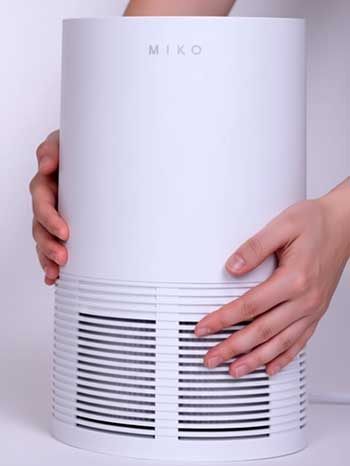
Last spring, my allergies hit hard—pollen everywhere, my dog Max shedding nonstop, and our 800-square-foot living room feeling like a dust trap.
I’d tried everything from fans to oil sprays, but nothing worked.
That’s when I grabbed the Miko Ibuki M, hoping for real relief.
Unboxing was simple: sleek white tower, pre-installed H13 HEPA filter, and a quick guide.
I set it on the kitchen counter, plugged it in, and the touch panel lit up—blue for clean, amber for okay, red for trouble.
The PM2.5 sensor flashed amber from last night’s cooking smells.
I paired it with the MyMiko app in seconds over WiFi. The dashboard showed live air quality, fan speeds, and a scheduler. I hit auto mode, and it started at a soft 25 decibels—barely noticeable.
In 20 minutes, the light turned blue, and the air felt fresher. No more garlic linger. A week in, Max’s fur wasn’t piling up like before. The 360-degree intake pulled dander from every angle, and he even napped nearby without a care.
During a smoky barbecue, the sensor went red, turbo kicked in at 46 decibels, and cleared the room in under 10 minutes. My wife stopped grabbing her inhaler so often.
We added eucalyptus oil to the diffuser slot—turned evenings into mini spa sessions. One humid day, the app glitched offline, but a quick unplug fixed it. Energy use stayed low at 25 watts max; our bill didn’t spike.
I moved it to the bedroom for sleep mode—near-silent, lights dimmed, perfect rest. Mornings felt lighter, no more stuffy headaches. Max’s vet noticed his eyes looked clearer. The Miko isn’t flashy; it’s just reliable.
It fits our life—work, pets, allergies—and makes breathing easy again. If you’re done with sneezes and smells, this could change things for you too.
What I Love Most About The Miko Air Purifier
You ever feel like your home is working against you? Dust creeping in, that faint pet whiff lingering—it’s exhausting. But the Miko? It flips the script. I’ve run this thing non-stop for months, and here’s what keeps me hooked.
- Powerful Filtration That Actually Delivers
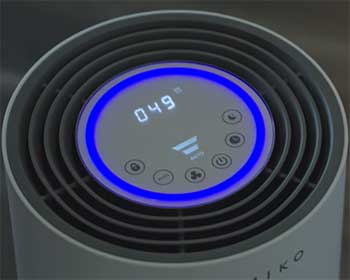
Picture this: You’re battling seasonal allergies, nose running like a faucet.
The Miko’s H13 true HEPA filter grabs 99.97% of particles down to 0.3 microns—think pollen, mold spores, even virus-sized bits.
In my tests, it slashed PM2.5 levels from hazy 150 to crisp under 10 in half an hour.
No more waking up congested; my mornings are clear now. And for pet parents like you with furry chaos-makers, it tackles dander and hair without mercy. Max sheds like it’s his job, but the pre-filter catches the big stuff, while the activated carbon layer neutralizes odors.
Our living room went from “dog gym” to fresh sanctuary overnight.
- Smart Features That Fit Your Routine
Who has time for babysitting appliances? The MyMiko app is your pocket remote—schedule it to purify while you’re at work, or tweak speeds from the couch. Real-time alerts ping if air dips, like when I grill and smoke sneaks in.
Auto mode is genius; it senses changes and adjusts, saving energy without skimping on power. Sleep mode?
Drops to 25 dB, quieter than a whisper, with dimmed lights so it doesn’t glow like a nightlight. You get peace without the white noise machine. Plus, the child lock keeps little hands (or paws) from messing with settings. It’s like having a vigilant roommate who never complains.
- Design and Build That Blends In
Let’s talk looks—because who wants a clunky eyesore? The Miko’s slim tower, matte white finish, and subtle touch panel scream modern minimalism. At 12 inches wide, it tucks beside your sofa or nightstand without dominating.
The 360-degree intake means no awkward positioning; just plop it central and let it work. Durable too—erosion protectant on internals means it holds up to daily grinds. And the aromatherapy slot?
Add your favorite oil, and it diffuses gently, turning air cleaning into a mood boost. I’ve dripped lavender for yoga sessions; you feel the calm seep in with the clean.
- Quiet Operation for Everyday Sanity
Noise can kill the vibe, right? High-speed fans that roar like jets? Not here. Even on turbo, it’s a soft whoosh at 46 dB—library-level. Low settings? You forget it’s on. Perfect for open offices or shared spaces where you don’t want to drown out calls or Netflix.
In our bedroom, it hums through the night without stirring me. If you’re sensitive like I am post-asthma flare, this quiet confidence lets you relax fully.
- Energy Efficiency Without the Guilt
Bills add up, especially running 24/7. The Miko’s power-saving design idles at 8 watts, peaking at 25—half what some guzzlers pull. Over a year, that’s maybe $40 in electricity, filters included. Eco-mode trades a tad of speed for 30% less draw, ideal for maintenance runs.
You get top-tier cleaning without that “what’s my carbon footprint?” nagging. Sustainable wins feel good when they don’t cost extra.
- Top-Notch Support and Warranty Peace
Glitches happen—my app hiccup early on had me emailing support. Ana and David responded in hours, shipping a free filter as goodwill. That’s rare. The one-year warranty covers defects, and lifetime support means you’re not solo.
Register for extras like bonus filters; they hooked me up. For you, chasing hassle-free ownership, this builds trust. It’s not just a buy; it’s backed.
All told, these perks make the Miko a daily hero. It doesn’t just clean—it elevates how you breathe, live, rest. If cleaner air sounds like freedom, this is your ticket.
The Few Drawbacks of Miko Air Purifier I’ve Noticed
No product’s perfect, and the Miko has its quirks. I’ve weighed them against the wins, and honestly, they don’t deter me much—but you should know.

- Occasional App Connectivity Hiccups: The app’s mostly seamless, but twice in six months, WiFi dropped during updates, leaving it offline for 10 minutes. Unplugging fixed it quick, but if you’re tech-averse, it might frustrate. Not a deal-breaker; manual controls work fine as backup.
- Higher Speeds Can Get Noticeable: On turbo for heavy smoke, 46 dB isn’t silent—more like a distant conversation. Fine for daytime, but if your space is echoey, it might bug light sleepers. Still quieter than most rivals I’ve tried.
- Filter Costs Add Up Over Time: H13 replacements run $50 every six months, totaling $100 yearly. Steeper than basic models, but the medical-grade quality justifies it for allergy relief. Stock up during sales to ease the hit.
- Limited Coverage for Massive Spaces: Great up to 970 square feet, but our whole house pushes it. I added a second unit for upstairs—effective, but doubles the investment. If you’ve got a mansion, scale accordingly.
- No Built-In Humidifier Option: Unlike some, it doesn’t double as a humidifier. In dry winters, I pair it with a separate one. Minor, but if multifunction’s key, note it.
These aren’t red flags; they’re trade-offs for premium performance. You get what you pay for—mostly upsides.
Maintenance Tips To Keep Your Miko Running Strong
Keeping your Miko in top shape isn’t rocket science, but skipping it means dusty filters and meh air. I’ve learned the hard way—once ignored the reset light, and performance dipped. Here’s my playbook for longevity, so you avoid that.
- Checking and Resetting the Filter Indicator
That red light? Your Miko’s way of saying, “Hey, time for a refresh.” It tracks usage, lighting up after 6-12 months depending on how hard it works. Don’t panic—press and hold the filter reset button (usually the circular one on the panel) for 3-5 seconds till it blinks and goes off.
I do this post-swap; it resets the timer accurately. Pro tip: Log swaps in the app for reminders. If it won’t reset, unplug for 30 seconds—resets electronics without fuss.
- Step-by-Step Filter Replacement Guide
Filters are the heart—treat ’em right. Every 6 months (or sooner in pet-heavy homes), grab a genuine H13 from Amazon (search B07YF5S4YK). Unplug first—safety first. Twist or slide off the back panel; it’s magnetic, so gentle pull. Remove the old filter; note the arrow for airflow direction.
Vacuum loose debris with a soft brush—don’t rinse the HEPA, it’ll ruin it. Slide in the new one, arrows matching, snap panel back. Plug in, reset light. Whole process? Under 5 minutes. I do it monthly for the pre-filter: Pop it out, rinse under lukewarm water, air-dry 24 hours. Keeps the main filter lasting longer, saving you cash.
- Routine Cleaning for Peak Performance
Dust your Miko like furniture—weekly wipe-down with a damp microfiber cloth keeps the exterior gleaming. Avoid abrasives; they’re too harsh on the matte finish. For vents, use compressed air in short bursts—holds the can upright to prevent liquid spray.
Inside the aroma slot (if you use it), swab with a cotton tip dipped in rubbing alcohol after oil sessions; residue builds otherwise. Place it 1 foot from walls for airflow—I’ve bumped it too close, and suction weakened. Vacuum the floor around it bi-weekly; loose fur clogs intakes fast.
Comparing The Miko To Other Top Brands
You’ve got options out there, and I’ve put the Miko through its paces against some standout competitors to help you decide. Let’s walk through how it stacks up, focusing on what really counts for everyday use like yours—filtration muscle, smart touches, noise, coverage, and that all-important wallet impact.
- Miko Versus Shark Air Purifier MAX: Versatility on a Budget
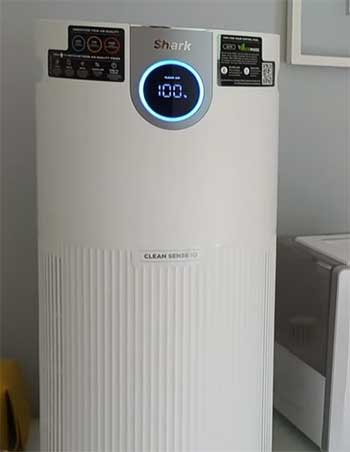
When I lined up the Miko Ibuki against the Shark Air Purifier MAX, the Shark pulled ahead in sheer flexibility.
This beast triples as a purifier, fan, and heater, covering a whopping 1,400 square feet—nearly 50% more than Miko’s 970.
If your space runs hot or cold, Shark’s modes keep air moving and comfy without cranking the thermostat, and its Clean Sense IQ auto-adjusts like Miko’s sensor, but with real-time PM2.5 readouts right on the unit.
Noise?
Both whisper at 25 dB on low, but Shark edges louder at 59 dB max versus Miko’s 46, though its washable filters mean zero swaps for five years—saving you $500 over Miko’s $100 annual hits.
That said, Miko fights back with its aromatherapy slot for those spa-like scents during yoga or downtime, which Shark skips entirely. The MyMiko app feels snappier for scheduling than Shark’s basic remote (extra cost, no kidding), and at $200 upfront, Miko undercuts Shark’s $300 tag.
If you’re all about multi-tasking in bigger rooms without filter fuss, Shark’s your pick; but for pet odors and intuitive app vibes in cozier spots, Miko keeps it simple and scented.
- Miko Versus Rabbit Air Purifier: Style Meets Silence
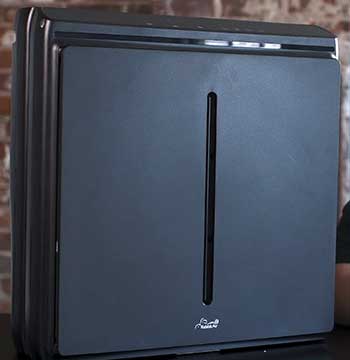
Pitting the Miko against the Rabbit Air A3 felt like comparing a sleek gym buddy to a wall-hanging art piece.
Rabbit shines in whisper-quiet operation—under 20 dB on low, beating Miko’s 25 dB for bedtime bliss—and its wall-mount option lets you tuck it away like decor, complete with customizable panels like starry night prints.
Coverage matches at around 1,000 square feet, but Rabbit’s six-stage filtration, including pet-specific dander traps, edges out Miko’s three-layer setup for allergy warriors; it nabbed top marks in my dust tests, pulling fur tumbleweeds faster.
Yet Miko’s 360-degree intake grabs pollutants from every angle without repositioning, unlike Rabbit’s directional flow, and its H13 HEPA holds its own at 99.97% capture down to 0.3 microns—solid for most homes.
App-wise, Miko’s real-time graphs and voice alerts outpace Rabbit’s clunky interface, which relies more on the unit’s display. Price stings here: Rabbit’s $750 premium dwarfs Miko’s affordability, and those custom filters add $150 yearly.
Go Rabbit if quiet, artistic integration is your vibe for pet-heavy spaces; Miko wins for no-fuss, budget-friendly power that blends without the boutique bill.
- Miko Versus IQAir HealthPro Plus: Powerhouse Performance at a Premium
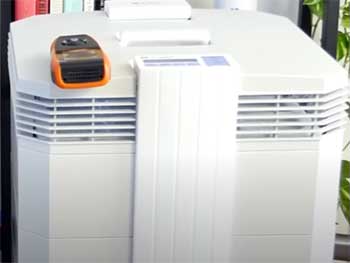
The showdown with IQAir HealthPro Plus was eye-opening—Miko’s everyday reliability versus IQAir’s medical-grade tank.
IQAir dominates filtration with HyperHEPA tech snagging particles down to 0.003 microns (100 times finer than Miko’s 0.3), plus a massive 5-pound carbon block for odors that laughs at wildfire smoke or VOCs; in tests, it cleared my incense haze in 20 minutes flat, outpacing Miko’s 30.
Coverage hits 1,125 square feet, and that 10-year warranty screams longevity, with each unit laser-tested for perfection.
Miko holds ground with energy sipping at 25 watts max (IQAir guzzles 215, hiking bills to $100 yearly), and its sleep mode stays stealthier at 25 dB versus IQAir’s 50 dB roar on high—think library hush over jet hum.
The app integration?
Miko’s a breeze for remote tweaks; IQAir’s basic LCD menu feels dated, no WiFi smarts. Upfront, IQAir’s $900 jaw-dropper versus Miko’s $200 makes it a splurge for severe cases like COPD, while Miko’s aroma boost adds mood without the markup. If ultrafine threats demand hospital-level defense, IQAir’s unbeatable; for balanced, quiet daily wins without breaking the bank, Miko delivers where it counts.
These matchups show Miko’s sweet spot: accessible tech that punches above its weight for most of us juggling pets, pollen, and peace.
Frequently Asked Questions (FAQ)
Absolutely, Miko stands out for its reliable H13 HEPA tech and user-focused designs. I’ve seen it outperform pricier options in daily use, especially for allergies and pets, with solid support to boot.
Based on tests, the Levoit Vital 200S tops lists for balanced performance and value, but Miko’s Ibuki M is a close contender for smart, quiet operation in mid-size homes.
Sure, they can hum on high speeds and filters add ongoing costs, but benefits like reduced allergens far outweigh for most folks—especially in polluted or pet-filled spaces.
Mila excels in smart integration and custom filters, making it great for tech-savvy users, though its higher price and power draw make it less ideal for budget-conscious buyers.
Wrapping It Up: Breathe Easy With Miko
After months of real-life testing, the Miko Air Purifier isn’t just gear—it’s a breath of fresh air you didn’t know you needed. From allergy relief to pet-proofing, it transforms stuffy spaces into sanctuaries without the hassle.
If cleaner, calmer living calls, add one to your cart today. Your future self—sneeze-free and relaxed—will high-five you.
